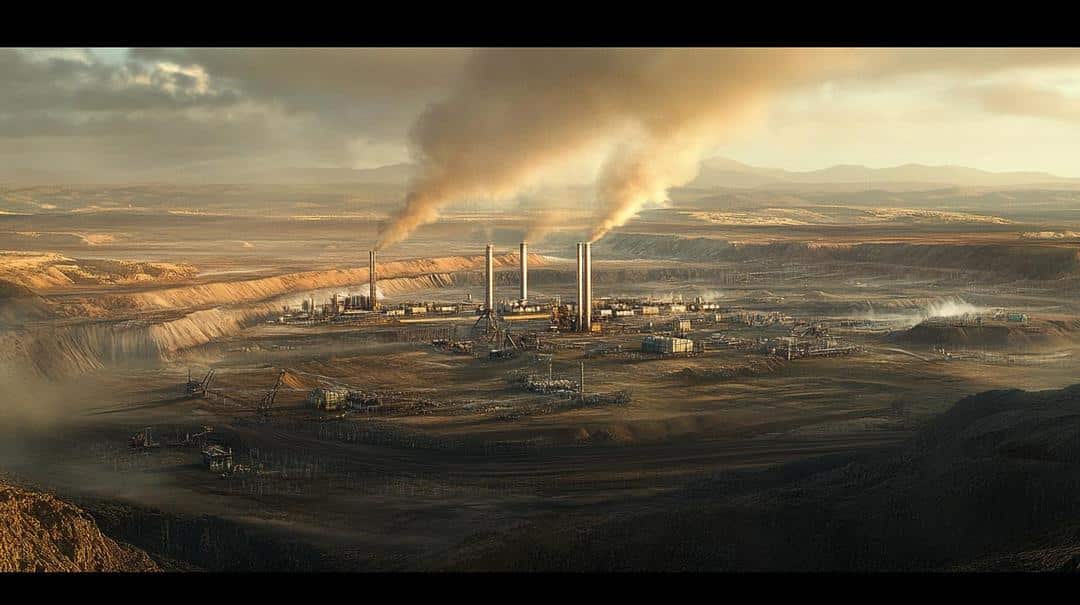Did you know that China accounts for over 70% of the global rare earth production today? Rare earth elements power everything from smartphones to electric vehicles—and China’s path to dominance in this field is as strategic as it is monumental. But how did it all begin? Buckle up as we trace the history of rare earth production in China from a little-known resource to a cornerstone of global industry. We’re going to try and spotlight the significant milestones, policies, and market shifts that shaped this billion-dollar industry.
Let’s dig in.
What's Inside
What Is The History Of Rare Earth Production in China?
Understanding Rare Earth Elements
Rare earth elements (REEs) are a group of 17 metallic elements critical to high-tech industries, including electronics, renewable energy, and advanced manufacturing. These elements are essential components in everything from smartphone batteries to electric vehicle motors and wind turbine generators.
Early Discovery and Strategic Development
In the 1980s, China made a groundbreaking discovery of massive rare earth reserves, primarily located in the Inner Mongolia region. Unlike other countries that viewed these resources as marginally important, China recognized their potential strategic value. The Chinese government began investing heavily in exploration, extraction, and processing technologies.
Competitive Advantage Through Low-Cost Production
Throughout the 1990s, China systematically dismantled global competition through aggressive pricing strategies. The country could produce rare earth elements at significantly lower costs compared to competitors like the United States. Key factors included:
- Lower labor costs
- Less stringent environmental regulations
- Massive government subsidies
- Centralized production infrastructure
Consolidating Market Dominance
By the early 2000s, China had effectively monopolized global rare earth production. The country controlled approximately 95% of the world’s rare earth element supply, transforming a previously overlooked resource into a critical economic and geopolitical asset.
The Role of Policy in China’s Rare Earth Development
Strategic Government Investments
The Chinese government’s approach to rare earth development was methodical and long-term. Key policy initiatives included:
- Substantial R&D funding in extraction and processing technologies
- Creation of specialized research centers
- Offering financial incentives to mining and manufacturing companies
- Developing comprehensive national strategies for resource management
Landmark Mining Regulations
The 1986 Mining Law represented a crucial turning point. This legislation:
- Standardized extraction procedures
- Established environmental guidelines
- Created a framework for centralized resource management
- Provided government oversight of rare earth production
Geopolitical Leverage
China strategically used rare earth elements as a diplomatic and economic tool. The 2010 embargo against Japan (opens in a new tab) demonstrated how control over these critical resources could be used to exert international pressure.
Milestones in China’s Rare Earth Market
Export Transformation
The 1990s marked a significant period of transformation, with China flooding global markets with cheap rare earth elements. This strategy effectively:
- Drove international competitors out of the market
- Established China as the primary global supplier
- Created a near-total dependence on Chinese production
Industry Consolidation
In 2016, the Chinese government consolidated rare earth producers into six major state-owned enterprises. This move:
- Improved production efficiency
- Enhanced quality control
- Provided stronger government oversight
- Created a more competitive international market positioning
Environmental and Social Costs
Ecological Challenges
Rare earth element extraction comes with significant environmental consequences:
- Substantial soil and water contamination
- Radioactive waste production
- High carbon emissions from extraction processes
- Ecosystem disruption in mining regions
Social Impact
Local communities near rare earth mining operations have experienced:
- Health risks from environmental pollution
- Displacement and economic disruption
- Limited long-term economic benefits
- Increased environmental vulnerability
Global Implications of China’s Rare Earth Dominance
Geopolitical Strategy
China has effectively transformed rare earth elements into a strategic asset, using market control to:
- Influence international trade negotiations
- Create economic leverage
- Support domestic high-tech industries
- Challenge global economic power structures
International Response
Other nations have begun developing alternative strategies:
- United States investing in domestic production
- Australia expanding rare earth exploration
- European Union seeking diversified supply chains
- Increased international research into alternative extraction methods
Conclusion
China’s journey to becoming the indisputable leader in rare earth production didn’t happen overnight—it’s a story of strategic planning, policy shaping, and adjusting to global market forces. However, this dominance isn’t without its challenges, from environmental concerns to geopolitical risks. As nations scramble to reduce their reliance on China, one thing is clear: the rare earth industry will continue to be a cornerstone of global politics, innovation, and sustainability. If you’re interested in diving deeper into what is happening in China and other countries, check out our latest News.
FAQs
What are rare earth elements and why are they important?
Rare earth elements (REEs) are a group of 17 chemical elements crucial for modern technologies like smartphones, electric vehicles, and wind turbines, thanks to their unique magnetic and conductive properties.
Why does China dominate the rare earth industry?
China’s dominance stems from its vast reserves, low-cost production methods, and government strategies, including subsidies, state consolidation, and international trade policies.
What were the major policies that shaped China’s rare earth production?
Key policies include the Mining Law (1986), export restrictions in the 2000s, and government consolidation of mining operations into six state-owned enterprises in 2016.
How has China’s rare earth production impacted global markets?
China’s low costs have driven competition out of the market, while export restrictions disrupted global supply chains, sparking trade concerns and initiatives for diversification.
Are there efforts to reduce environmental harm in rare earth mining?
Yes, China has introduced stricter regulations, invested in eco-friendly mining techniques, and closed illegal mines to mitigate environmental damage.


Dustin
Driven by a fascination with rare earth elements and their role in powering modern tech and engineering marvels. A true car and tech enthusiast, he loves exploring how these hidden heroes fuel our most exciting innovations.
You Might Also Like…